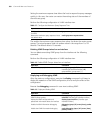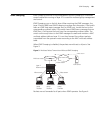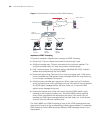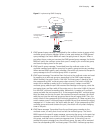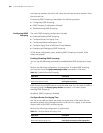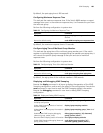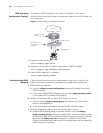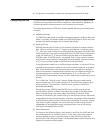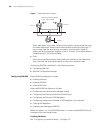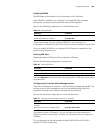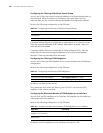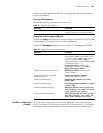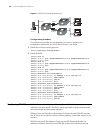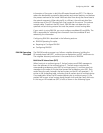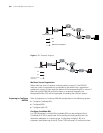
Configuring PIM-DM 187
■ If they are not consistent, contact the maintenance personnel for help.
Configuring PIM-DM PIM-DM (Protocol Independent Multicast, Dense Mode) belongs to dense mode
multicast routing protocols. PIM-DM is suitable for small networks. Members of
multicast groups are relatively dense in such network environments.
The working procedures of PIM-DM include neighbor discovery, flood and prune,
and graft.
■ Neighbor discovery
The PIM-DM router needs to use Hello messages to perform neighbor discovery
when it is started. All network nodes running PIM-DM keep in touch with one
another with Hello messages, which are sent periodically.
■ Flood and Prune
PIM-DM assumes that all hosts on the network are ready to receive multicast
data. When a multicast source “S” begins to send data to a multicast group
“G”, after the router receives the multicast packets, the router will perform RPF
check according to the unicast routing table first. If the RPF check is passed, the
router will create an (S, G) entry and then flood the data to all downstream
PIM-DM nodes. If the RPF check is not passed, that is when multicast packets
enter from an error interface, the packets will be discarded. After this process,
an (S, G) entry will be created in the PIM-DM multicast domain.
If the downstream node has no multicast group members, it will send a Prune
message to the upstream nodes to inform the upstream node not to forward
data to the downstream node. Receiving the prune message, the upstream
node will remove the corresponding interface from the outgoing interface list
corresponding to the multicast forwarding entry (S, G). In this way, a SPT
(Shortest Path Tree) rooted at Source S is built. Leaf routers initiate the pruning
process.
This is called the “flood & prune” process. Nodes that are pruned provide
timeout mechanism. Each router re-starts the “flood & prune” process upon
pruning timeout. The consistent “flood & prune” process of PIM-DM is
performed periodically.
During this process, PIM-DM uses the RPF check and the existing unicast
routing table to build a multicast forwarding tree rooted at the data source.
When a packet arrives, the router judges the validity of the path. If the
interface is indicated by the unicast routing to the multicast source, the packet
is regarded to be from the correct path, otherwise, the packet will be discarded
as a redundancy packet without the multicast forwarding. The unicast routing
information as path judgment can come from any unicast routing protocol
independent of any specified unicast routing protocol such as the routing
information learned by RIP and OSPF.
■ Assert mechanism
As shown in the following figure, both routers A and B on the LAN have their
own receiving paths to multicast source S. In this case, when they receive a
multicast packet sent from multicast source S, they will both forward the
packet to the LAN. Multicast Router C at the downstream node will receive two
copies of the same multicast packet.




